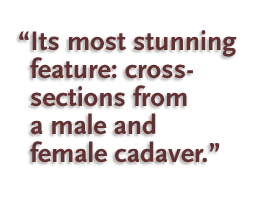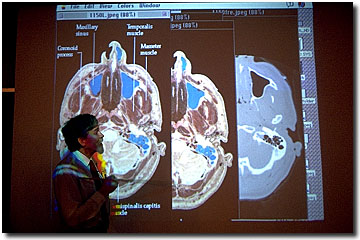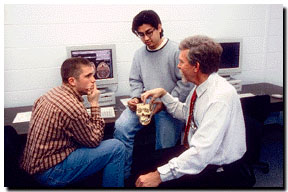 t used to be that John McNulty, a professor of anatomy at Loyola University in Chicago, only had textbook images when he wanted to show human anatomy to his first-year medical students. Now, thanks to the Internet, McNulty's students can tap into the Visible Human Project, a complete digital image library of the human body set up by the U.S. National Library of Medicine. Its most stunning feature: complete cross-sections from both a male and a female cadaver.
t used to be that John McNulty, a professor of anatomy at Loyola University in Chicago, only had textbook images when he wanted to show human anatomy to his first-year medical students. Now, thanks to the Internet, McNulty's students can tap into the Visible Human Project, a complete digital image library of the human body set up by the U.S. National Library of Medicine. Its most stunning feature: complete cross-sections from both a male and a female cadaver.
Instead of turning to textbooks, medical students can now download images from the Visible Man and examine organs, bones, tissue, and muscle, millimeter by millimeter. Joseph Paul Jernigan, a convicted murderer executed in 1994 who donated his body to science, is the first human to exist in cyberspace. In August 1996, the Visible Woman, sliced at an even finer thickness of 0.3 millimeters, will join Jernigan.
|








